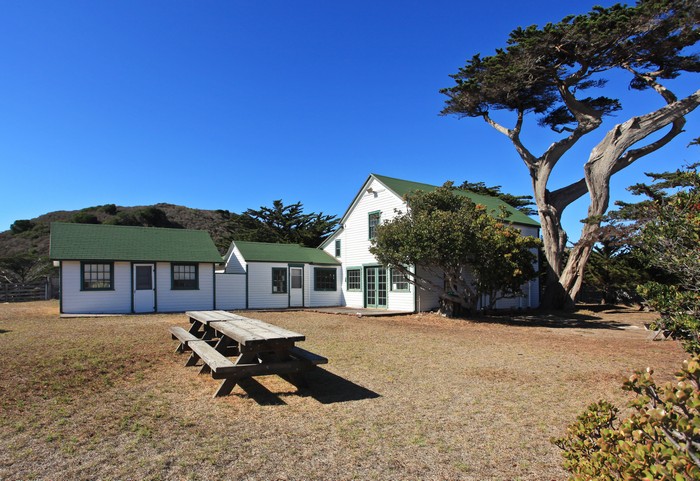Main Ranch House at Santa Rosa Island. Photo by Doug Mangum
The National Park Service (NPS) discovered a significant ancient Native American site while conducting archeological monitoring during a rehabilitation project of the historic Main Ranch House on Santa Rosa Island.
Archeologists discovered artifacts characteristic of ancient Paleocoastal sites that were occupied by the first islanders on the northern Channel Islands between 8,000 and 13,000 years ago.
Scientists now believe that ancient sites from this period may be evidence of a coastal migration following the North Pacific Rim from Northeast Asia into the Americas, part of the peopling of the new world.
Among the artifacts uncovered were two types of stone tools that are distinctly representative of early North American Paleoindians —Channel Islands barbed points and crescents.
The early settlement sites on the Channel Islands produced several milestones in archaeology including the earliest evidence for seafaring and island colonization in North America, the oldest shell middens in North America, and the earliest basketry from the Pacific Coast of North America.
Santa Rosa Island is also the location of the discovery of Arlington Man, the oldest known human remains found in North America, dating to about over 13,000 years ago.
Part of the ancestral homeland of the Island Chumash, many contemporary Chumash families trace their heritage to Santa Rosa Island. There were up to 1,200 Chumash living there in at least nine known historic Chumash village sites, including Hichimin, which was located near the historic main ranch complex.
“This ancient site is believed to have considerable value and protecting it is part of the core mission of the NPS and the park’s enabling legislation.” said Channel Islands National Park Superintendent Russell Galipeau. “Our goal is to preserve both of these important and irreplaceable cultural resources found in the park.”
Channel Islands National Park Superintendent Russell Galipeau announced the release of the Notice of Availability of the Final Environmental Impact Statement (EIS) for the replacement of the pier at Scorpion Anchorage on East Santa Cruz Island.
The park plans to replace the existing pier in order to provide safe, accessible, efficient, and sustainable access for visitors at Scorpion Anchorage. The new pier will provide more reliable access during low tide conditions for concessioner and National Park Service vessels.
The alternatives considered included taking no action, replacing the pier in its existing location, and replacing the pier at a location approximately 300 feet to the south of the existing location.
The preferred alternative is to construct a longer, wider pier to the south of the existing pier that will include a gangway for improved and safer visitor access.
A Record of Decision for this project will be prepared after conclusion of the 30 day no-action period commencing today with the U.S. Environmental Protection Agency announcement of release of the Final EIS published in the Federal Register.
Scorpion Anchorage is the most visited destination in the park, with about 65,000 people coming ashore each year to enjoy recreational activities such as hiking, picnicking, camping, kayaking, and swimming.

